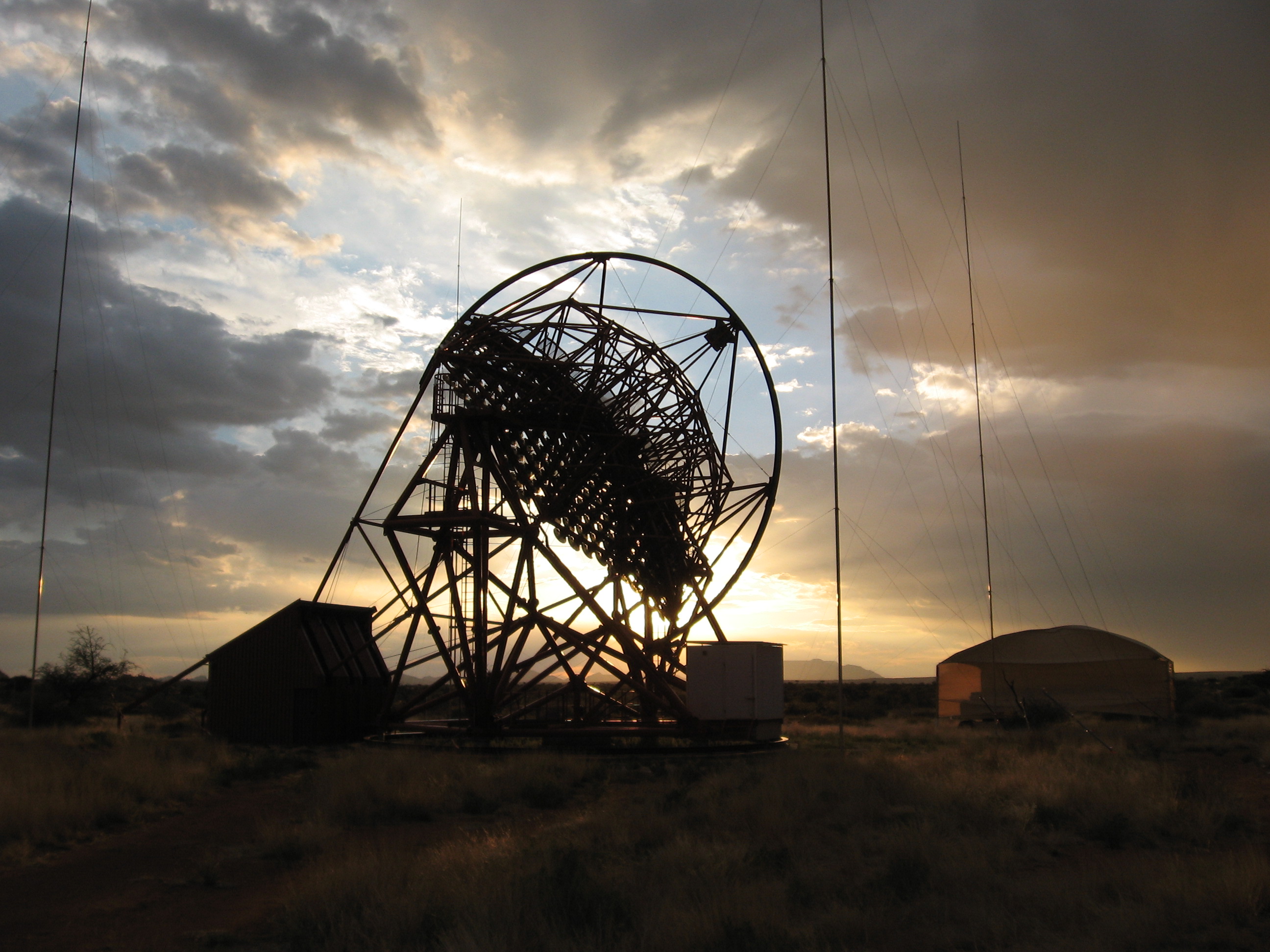PhD thesis
I have written my PhD thesis at the IAAT in Very High Energy Astronomy. Please find it at online as an ebook or printed via print on demand.The thesis contains two parts, one deals with the development of the Mirror Alignment Control System for phase II of the HESS experiment. The other part evaluates and extends a statistical analysis tool to extract morphological structures in low-count astronomical data. The tool is then applied to HESS I data from observations of the source HESSJ1837-069.
The HESS phase II mirror alignment
The HESS experiment operates 4 telescopes in Namibia since 2001. An extension, HESS phase II, has now been build and is operating since July 2012. I have developed a semi-automatic system for aligning the ~900 mirrors of the new telescope CT5."The telescope is pointing at a star which has to be bright and isolated. Each mirror facet reflects the star light onto the PMT camera lid and the Lid-CCD camera takes pictures of the reflected spots. [...] If these are not aligned properly, the picture will show up to 900 different spots for the same star. If the mirrors are aligned, they all focus the star light onto the same spot. The alignment system moves the actuators of the individual mirrors and takes pictures of the spot pattern in order to find out which spot belongs to which mirror. Once the alignment system has determined where each mirror is pointing at, it also has to find out how much each mirror has to be tilted through the actuators, so that all mirrors could reflect the star light onto the same position in the PMT camera lid."
S.Schwarzburg, 2012The technology stack:
❚Python ( Django / Scipy / Numpy / Ephem) ❚ HTML5 / CSS3 / Jquery❚ DS9 ❚ TCP/IP ❚ C ❚ SoC (uClinux / Microblaze / OPB) ❚VHDL ❚The morphology study
The source HESSJ1837-069, which was discovered in the first Galactic plane scan conducted by HESS has in the last years been claimed to consist of two sources: the main source in the north and a less intense in the south."The main task for this second part of the thesis was to find an unbiased method which allows to quantify whether the source region splits into several sub-features and to find a measure for the detection significance for these features. It it not possible to answer a question like this with the standard H.E.S.S. approaches. These have to resort to shape assumptions for fitting techniques (most prominently 2D-gaussian distributions and χ2- or maximum likelihood fits) or they lose spatial information by the use of re-binning and slicing techniques with additional fits (again 1D-gaussians and χ2-fits).
The chosen approach involving LIRA and a simple thresholding technique for feature separation seems promising, since EMC2, LIRA incorporates many useful features: it takes the PSF and an exposure into account while it forward-fits a background and a multi-scale representation to the source region with a Markov-chain Monte Carlo method. The full mathematical treatment of low-count pixel values in the Bayesian framework of LIRA results not only in a best-fit for the source, but in a full distribution of possible source intensities which can be used to quantify knowledge or certainty about the source shape. To assess feature significance, the best-fit reconstructed model of a LIRA analysis is separated into clearly distinct features. These features are then removed from the model for individual reference simulations, in order to gain simulated observations from the individual null-models. Null-models follow the hypotheses that the features are just fluctuations of the background and the surrounding features."
S.Schwarzburg, 2012The technology stack:
❚ R ❚ SNOW ❚C ❚ Python (Scipy / Numpy) ❚ Markov Chain Monte Carlo / Bayesian Inference ❚Graduation thesis
A FITS based realtime analysis software for X-ray experiments
Have a look at my diploma thesis. Or at the new fpipe site.The basic observation which lead to the development of the FPIPE software was that scientific tools, which are used to analyze data from X-ray telescopes are basically already present during the development of the detectors, at least at the pre-processing level. For X-ray experiments, where the detectors are often CCDs, this pre-processing includes applying of offset-maps and bad-pixel maps and many more specialized tasks. But even though these tools are already present during detector development, they are re-invented for the scientific analysis software. The reason for this re-invention is based on the different requirements of the realtime-analysis during the development of detectors and the scientific data analysis, which is based of standardized file formats. FPIPE tries to combine both requirements (realtime and FITS based) into a single, but flexible setup.
The development of the software continues at the Dr. Remeis-Sternwarte Bamberg and e.g. will be used for the X-ray telescope eROSITA on the Russian Spectrum-Roentgen-Gamma (SRG) mission.
The technology stack for this pipeline:
❚FITS (cfitsio)❚SysV IPC (semaphores)❚C ❚Perl ❚ Gtk+ ❚ Cairo ❚
 I have written my PhD thesis at the
I have written my PhD thesis at the